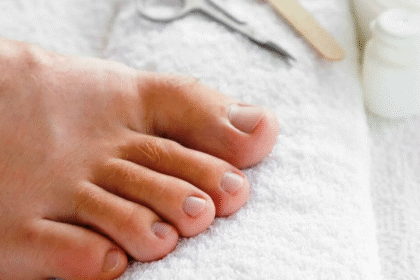Recovering from an injury can feel overwhelming, especially when pain limits daily movement and confidence. Many people believe that healing requires complex treatments or long medical sessions, but that’s not always true. With the right knowledge and safe exercises, recovery can begin from the comfort of your own space. That’s the beauty of Physiotherapy at Home in Dubai you to regain strength, flexibility, and mobility without stress or travel.
What Makes Home Physiotherapy Effective?
Injury recovery often requires consistency more than intensity. Traditional recovery programs sometimes become intimidating because they demand time and scheduling. But when therapy shifts to your home environment, you remain relaxed, confident, and consistent. Healing becomes part of your routine—not something that disrupts your life. You move at your own pace with exercises designed to gradually restore movement and reduce discomfort. This builds long-term resilience and prevents re-injury.
Benefits of Home-Based Physiotherapy
Home exercises for recovery are simple yet powerful. They are designed to target the injured area without putting unnecessary strain on the body. Whether you’re dealing with joint stiffness, muscle soreness, ligament strain, or post-injury weakness, home physiotherapy offers:
-
Gentle recovery movements tailored to all injury levels
-
Improved blood circulation to support tissue healing
-
Strengthening of supporting muscles to prevent re-injury
-
Better posture and alignment after long periods of rest
-
Low-impact methods that reduce pain and stiffness
-
Mental comfort that encourages recovery at your own pace
These benefits allow you to heal confidently while staying safe and active.

Safety First: Things to Know Before Starting
Before beginning any recovery exercise, it’s important to follow key safety rules:
-
Start slow to assess your body’s reaction
-
Avoid sharp pain or pressure during movement
-
Maintain proper breathing and posture
-
Use support like cushions or walls if needed
-
Be consistent but never force movement
Listening to your body is essential. Recovery isn’t a race—it’s a journey built step by step.
Warm-Up Exercises to Prepare the Body
Warming up protects your joints and muscles from strain. Begin every session with a few minutes of gentle activity:
1. Ankle Pumps
Lie or sit with legs extended. Flex your feet back and forth slowly. Repeat 15–20 times.
2. Shoulder Rolls
Sit or stand with your back straight. Roll both shoulders slowly forward and backward 10 times each.
3. Neck Side Stretch
Tilt your head gently toward one shoulder, hold for 10 seconds, switch sides. Repeat 3–5 times.
These movements stimulate circulation and prepare the body for deeper exercise.
Physiotherapy Exercises for Upper Body Injuries
1. Wrist Flex Stretch
Keep your arm straight, palm facing down. Gently pull back on your fingers with your other hand. Hold for 15 seconds. Helps heal wrist strain or typing injuries.
2. Wall Push-Ups
Stand facing a wall. Place your palms flat and slowly lean forward, bending your elbows. Push back to starting position. Repeat 10 times. Builds arm, chest, and shoulder strength gently.
3. Shoulder Blade Squeeze
Sit upright. Pull your shoulder blades together as if trying to pinch a pencil between them. Hold for 5 seconds. Repeat 15 times. Improves posture and reduces shoulder pain.
Physiotherapy Exercises for Lower Body Injuries
1. Hamstring Stretch
Sit on the floor with one leg straight and the other bent. Reach toward your toes without bending your back. Hold 15–20 seconds. Stretches hamstrings safely.
2. Heel Raises
Stand with hands on a wall for balance. Raise your heels off the floor and slowly lower them back down. Repeat 12–15 times. Strengthens calves and ankle stability.
3. Quad Set
Sit with legs straight. Tighten your thigh muscles by pressing your knee down. Hold 5 seconds and relax. Repeat 15–20 times. Helps knee recovery.
Core Strengthening for Better Balance
1. Pelvic Tilt
Lie on your back with knees bent. Tighten your belly and press your lower back into the floor. Hold 5 seconds. Repeat 15 times.
2. Bridge Exercise
From the same position, lift your hips upward, forming a straight line from shoulders to knees. Hold 5 seconds and lower slowly. Repeat 10–12 times.
3. Seated Marching
Sit upright on a chair. Lift one knee at a time as if marching. Repeat 20 times. Improves hip mobility and core stability.
A strong core supports the entire body and reduces strain on injured areas.
Flexibility and Mobility Recovery
1. Cat-Cow Stretch
Begin on hands and knees. Arch your back (cow), then round it upward (cat). Move slowly with your breath. Repeat 10 times.
2. Hip Flexor Stretch
Step one foot forward into a lunge. Gently push your hips forward and hold 15 seconds. Switch sides. Helps lower back and leg pain.
3. Spine Rotation
Lie on your back, arms wide. Drop knees to one side while looking the opposite way. Hold 15 seconds, switch sides. Helps stiffness relief.
Low-Stress Recovery Tips
Healing is not only physical—it’s mental too. Reduce stress while recovering by:
-
Setting small daily goals
-
Using heat or ice therapy when needed
-
Staying hydrated
-
Sleeping well to support tissue repair
-
Keeping a positive mindset and patient attitude
Avoid comparing your progress with others. Every injury heals differently, and your consistency matters more than speed.
Posture Correction for Better Recovery
Poor posture not only slows recovery but can also cause injury. Practice maintaining spinal alignment:
-
Keep shoulders relaxed
-
Engage core while sitting or walking
-
Avoid slouching at a desk
-
Take breaks every hour if seated for long periods
Improved posture reduces pain in the neck, back, and shoulders by reducing muscle strain.

Breathing Techniques During Recovery
Deep breathing helps ease muscle tension and supports healing. Try this:
Diaphragmatic Breathing
Sit or lie comfortably. Place a hand on your abdomen. Inhale slowly through your nose, expand your abdomen, then exhale slowly. Practice 5–10 minutes daily. It improves oxygen flow and reduces stress.
When to Progress Your Exercises
As pain decreases and strength improves, gradually increase repetitions or hold positions longer. Never rush progress. Healing happens in stages—mobility first, strength second, endurance last.
Preventing Future Injuries
Recovery should not end once pain is gone. Continue exercise routines to maintain strength and prevent future injuries. Stretch daily, maintain flexibility, and include balance exercises to boost joint stability.
Final Thoughts
Healing from injury does not have to be stressful or complicated. With the right approach, Physiotherapy at Home Dubai offers an effective and manageable way to restore movement, reduce pain, and rebuild strength. These exercises are safe, practical, and suitable for all ages. Whether recovering from a sports injury, muscle strain, or joint stiffness, staying consistent and patient will bring noticeable results. Just remember to start slow, listen to your body, and celebrate every small improvement. Recovery is a journey—and every step counts.



